Chimney Services » creosote buildup
Our Company Blog
by Mike O'Mara | Sep 10, 2019 | Chimney Care
If you own a fireplace, then you are well aware of the warmth and comfort they can bring your home. Unfortunately, there a few common misconceptions that we’ve noticed homeowners here in San Diego fall prey to, 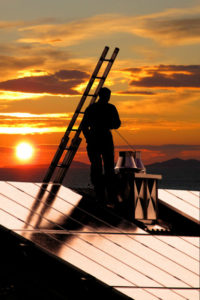 all of which can put your home and family at risk. Learn more below!
all of which can put your home and family at risk. Learn more below!
You Don’t Require An Annual Inspection
Every type of fireplace, no matter the size, style, liner material, or fuel type, needs an annual inspection. This yearly maintenance gives your sweep the opportunity to look for any buildup, obstructions, gaps, cracks, holes, or any other types of deterioration. If there are problems present within your structure, you could face an increased risk of carbon monoxide exposure, house fires, structural decay, and more.
Whether you need a basic level one overview or a more in-depth and extensive level two inspection, our CSIA certified sweeps can help you out. Call today to learn more.
It’s Fine To Use Unseasoned Wood
Many feel that they can simply throughout whatever wood they find into their wood-burning fireplace, but this can actually lead to quite a few issues. Using wet or unseasoned wood will cause your fires to smoke a lot, and it encourages creosote accumulation throughout your chimney. The more creosote you have, the higher your risk will be of experiencing a chimney fire, which will cause extensive damage to your structure (and make it unsafe for use).
To ensure your logs are properly seasoned store them for at least six months in a shed with a sturdy roof and open sides. This ensures they stay protected from harsh weather, yet still, have ample opportunity to dry out. Purchasing your fuel from someone else? Make sure it is lightweight, split at the ends, shorter in length, and makes a hollow, clunking noise when smacked together.
My Masonry Can Withstand Anything
While your masonry structure is exceptionally strong, it still needs to be protected. A simple rainfall can do more damage than you’d think, and many do not realize that their brickwork is actually quite absorbent. By investing in waterproofing services, as well as crown repair and other types of preventative maintenance, you can go far in keeping your structure standing tall and strong for the long haul.
I Don’t Need Professional Help
If you’re an experienced do-it-yourselfer, you may feel that you can tackle masonry repairs, chimney cleanings, and more without the help of a professional. Unfortunately, this can lead to a lot of costly and dangerous scenarios. When it comes to your fireplace and chimney, you really don’t want to take any chances, as even a small mistake or minor mishap can cause gas leaks, chimney fires, and more.
Professional technicians in this industry stay educated with reputable organizations like the CSIA, the NCSG, and more, ensuring they truly know their stuff. Cleaning kits and caulk simply won’t get the job done right, and these “quick, affordable fixes” will leave you with more problems than you started with. Trust in us from the start for the top-notch results you deserve.
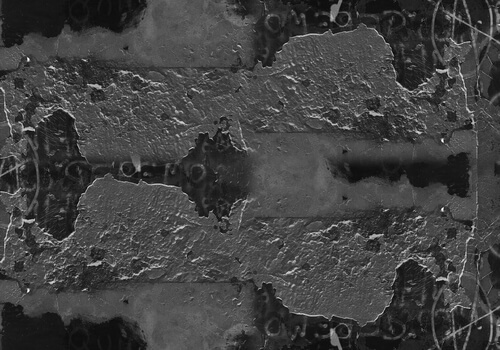
by Mike O'Mara | Aug 14, 2018 | Chimney Safety
One of the biggest reasons why the CSIA stresses the importance of annual inspections is so sweeps can evaluate whether or not you have excessive creosote buildup inside of your chimney. Should dangerous amounts be present, having it removed will allow for a safer and better functioning fireplace, sure to bring countless nights of peace, warmth, and comfort. Learn more about creosote below!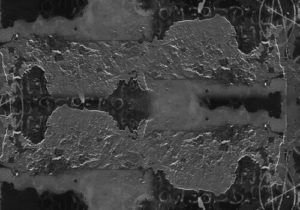
What Is Creosote?
Creosote is a substance that builds up in your chimney as you light fires in the fireplace. It comes in a few different forms, ranging from soft and flaky to sticky and tar-like to hard and glazed. So no matter the texture, creosote is very damaging and dangerous to have in your chimney, which is why regular removal is important.
The reason why creosote triggers so many problems is due to its highly flammable nature. The more you have, the higher your risk is for a chimney fire, which causes significant structural damage and makes your fireplace unsafe and unsuitable for regular use.
Unfortunately, not all chimney fires are created equal. It may seem like they all would be loud and obvious, but many are quite quiet, meaning homeowners are unaware their system has undergone excessive damage. This means that they’ll continue to light fires and use their chimney, which could pose serious threats to their home and family in the form of gas leaks and house fires.
When Is Deglazing Necessary?
Now, for those who invest in regular inspections and maintenance, any creosote buildup should not be especially challenging to remove. Yet, fireplaces that have faced longer periods of neglect or misuse may find themselves with glazed creosote throughout, which is more challenging to take on.
Glazed creosote needs to be approached differently than your standard creosote buildup, as it is thicker, more solid, and essentially baked onto your chimney walls. Attempting removal without the proper tools and equipment will not get the job done, and it will likely cause damage to your chimney interior in the process.
If your find yourself face-to-face with glazed creosote, the best option would be to invest in help from a CSIA certified sweep, like the crew at Weststar Chimney Sweeps. This is the only way to avoid bigger issues down the line, and it will get the job taken care of in the most efficient manner possible. Investing in professional help will always yield the quickest and least expensive results overall, so be sure to contact us right away if you suspect trouble.
Need An Inspection?
Not sure where your chimney stands in terms of creosote accumulation? Sounds like it’s time for an inspection. Our professional and experienced crew can look things over for you, then assess whether or not further repair or sweeping services are necessary. Together, we can find the best solutions for your needs, so give us a call soon!
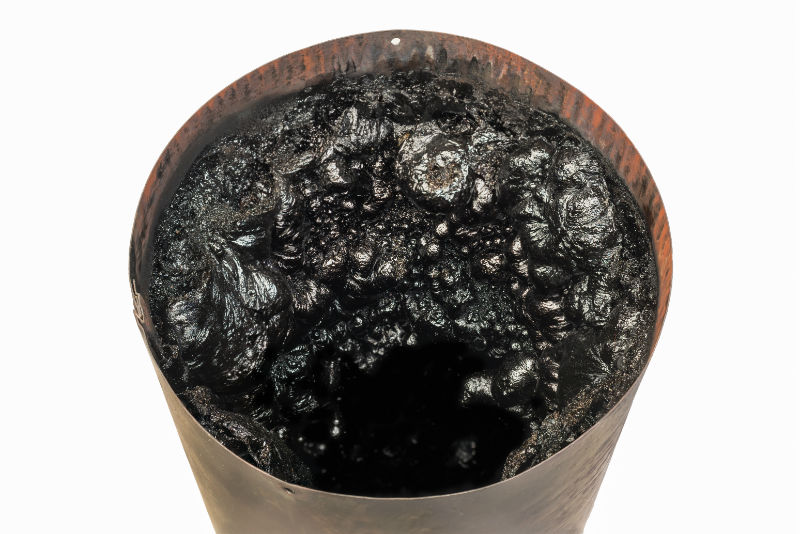
by Mike O'Mara | Jul 9, 2016 | Chimney Sweeping
One of the biggest reasons why you need to have your chimney professionally swept every year is to have all of the creosote that has accumulated on the walls of your chimney removed. A natural compound that develops during the combustion process of burning wood, creosote is so flammable that the Chimney Safety Institute of America (CSIA) has named it as a leading cause of chimney fires. Usually, a professional chimney sweeping will remove all of the creosote from your chimney, but sometimes the creosote can build up so badly that it turns into a glaze that coats the chimney walls that cannot be removed by a typical chimney sweeping. Weststar Chimney Sweeps knows what to do in this type of situation to get all of that glazed creosote out of the chimney. We would like to tell you more about our creosote deglazing services.
What exactly is creosote deglazing?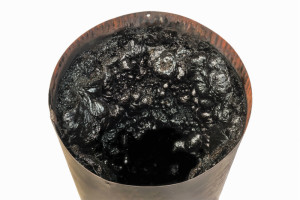
A detailed mechanical cleaning, creosote deglazing is the process we use to remove creosote that has become baked onto your chimney walls. Weststar Chimney Sweeps uses special tools, including a high-speed half-inch drill and a 24-inch wizard whip, to break down the rock-solid glazed creosote and remove it from your chimney. Standard chimney sweeping tools are not powerful enough to do this task correctly.
How did the creosote become glazed in my chimney?
Creosote buildup happens in three stages. In the first stage, the creosote has a fluffy and velvety texture, and in the second stage, it becomes flaky and crumbly. When creosote reaches the third stage, it turns into a shiny, black glaze that coats the inner chimney walls. Although creosote is a natural and expected residue of burning wood, the third stage of creosote usually occurs due to user practices, especially burning unseasoned wood. When you burn wood that has not been allowed to dry sufficiently, the fire burns at a lower temperature because it is spending a lot of energy drying out the moisture in the wood. A cooler fire can accelerate the development of creosote, which can lead to creosote glazing. Another user error that allows creosote to glaze is not opening the damper completely during a fire, as this allows the fire to smolder. Installation errors can also encourage the development of glazed creosote. Newer fireplace inserts are typically much smaller than masonry chimneys and need professional installation to work properly. Weststar Chimney Sweeps can install a stainless steel chimney liner to provide a correctly sized flue for your insert. This will prevent the drafting problems that can lead to glazed creosote on your chimney walls.
Make sure your chimney is ready to use this fall. Contact us at Weststar Chimney Sweeps to schedule your appointment for your annual chimney sweeping and inspection today.

by Mike O'Mara | Mar 29, 2016 | Chimney Maintenance
When our Chimney Safety Institute of America (CSIA)-certified chimney sweeps from Weststar Chimney Sweeps clean your chimney, we take great care to remove every bit of creosote from its interior walls. However, sometimes it takes more than just a typical chimney sweeping to get rid of this flammable residue. Creosote evolves through three different stages, and when it gets to the third and final stage, it becomes glazed on the walls of your flue. Glazed creosote can be very difficult to remove because it is like a thick shell of chocolate stuck to your chimney walls. It is impossible to remove with our regular chimney sweeping tools, so we will need to give your chimney a professional and detailed mechanical cleaning. Creosote deglazing is very important to keep your chimney safe from dangerous hazards, and we would like to tell you more about this service and why it is so essential.

What exactly is creosote, and why is it so hazardous?
A compound that forms naturally during the combustion process of burning wood, creosote sticks to the inner walls of your chimney and can accumulate into large deposits. If these deposits become large enough, they can block your flue and even ignite a chimney fire if the internal temperature of your flue reaches a high enough point. As the CSIA says, chimney fires can be caused by dirty chimneys. This is why the CSIA and other national fire safety organizations recommend that a chimney should be professionally swept annually.
What causes creosote to become glazed?
Although creosote occurs naturally when you burn wood, there are some precautions you can take to keep it from reaching the glazed state. The most important thing you can do to prevent glazed creosote is to always burn only seasoned wood, or wood that has been dried for at least six months. When you burn freshly-cut, wet wood, your fire burns at a lower temperature because it is too busy trying to burn off all of the excess moisture. This cooler temperature causes more creosote to form and dry at a slower pace. New layers of creosote begin to form over layers that are still wet, which leads to the development of glazed creosote. Another important thing to always do when you use your fireplace is to be sure the damper is completely open, which prevents the fire from smoldering and producing more creosote.
What is a creosote deglazing?
A detailed mechanical cleaning, creosote deglazing involves our trained technicians using a mechanical high-speed, half-inch drill and a 24-inch wizard whip to be able to safely remove the glazed creosote by breaking it down so that it will not damage the interior walls of your chimney.
Have you scheduled your annual chimney sweeping yet this year? Contact us at Weststar Chimney Sweeps to arrange a visit from our CSIA-certified sweeps to see if you will also need a creosote deglazing treatment.
by Mike O'Mara | Mar 25, 2014 | Chimney Maintenance
Spring: A Fresh Start for Your Chimney
You’ve done an excellent job in taking good care of your chimney during winter, but no matter how cautious you’ve been, there might still be things that happen inside the chimney that are just beyond your control. Winter might have left some damages behind that need to be inspected and fixed and have to be attended to right away. Our Chimney Safety Institute of America (CSIA) certified chimney sweeps from Weststar Chimney Sweeps would like to put your mind at ease.
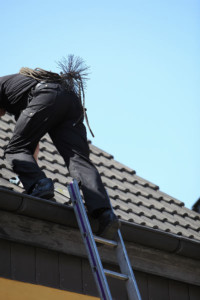
Chimney cleanings and inspections are not DIY projects. Let the certified professionals put your fears to rest.
Parts & Systems
There are certain parts of the chimney which are vital in directing the smoke out the right way; parts like the:
- Flue
- Flue liner
- Damper
- Smoke Chamber
These parts help create draft inside the chimney. However, these are also the parts that are most prone to creosote buildup or other obstructions making it harder for smoke to go out. This opens doors to a lot of problems that will not only cost thousands in repairs, but may even cost you something more valuable—your health or even your life.
What to do
To prevent objects from entering the chimney, it’s best to have a chimney cap installed so that the inside of your chimney is protected from all the dangers that the outside world can bring. Some examples are animals, debris, spider webs and leaves.
Then there is water. This is one of the things chimneys hate the most because it destroys it—the performance and the structure. It can cause the brick walls to deteriorate. This problem can be prevented by waterproofing the chimney and repairing the flashing. We also make it a point to include the chimney crown in the inspection and repairs because when it is cracked, this can also be another entry point for water. These measures will help prolong the life of your chimney.
Even if you don’t use your chimney during spring, it’s best to keep animals and water out. Remember, it’s not just to prepare for the next winter season, we want to make sure that your chimney continues to be efficient for many years to come. Let us help keep your heating system in tip-top shape.
 all of which can put your home and family at risk. Learn more below!
all of which can put your home and family at risk. Learn more below!



